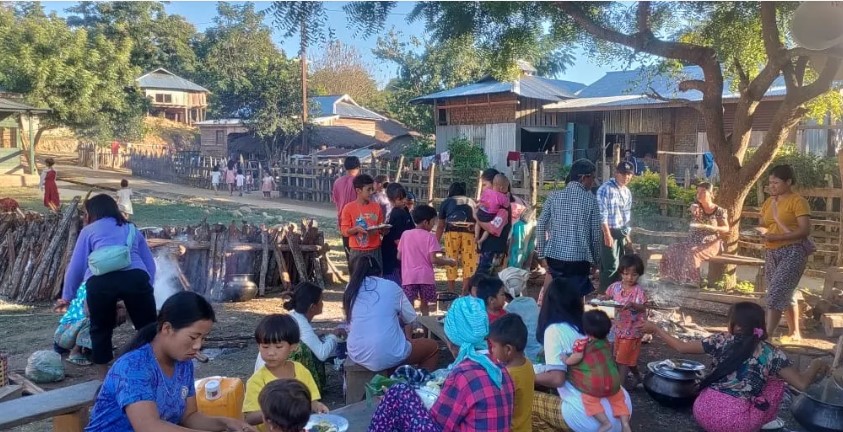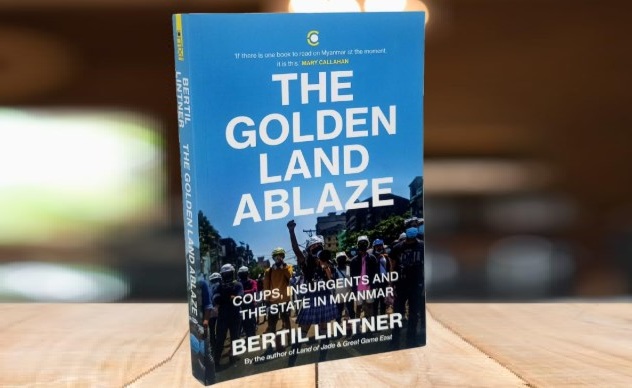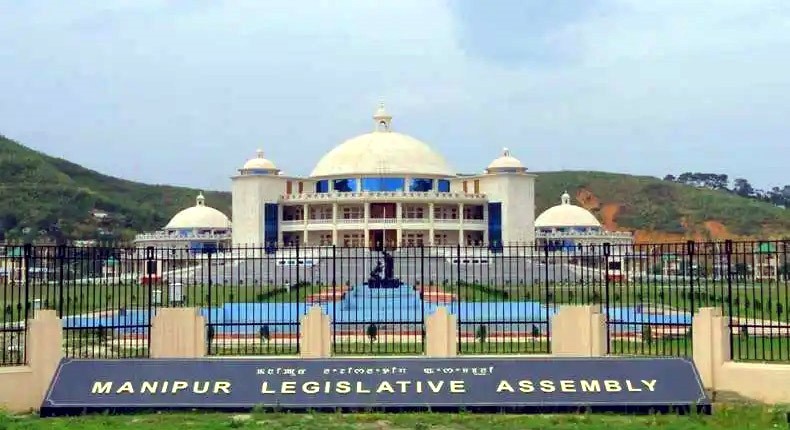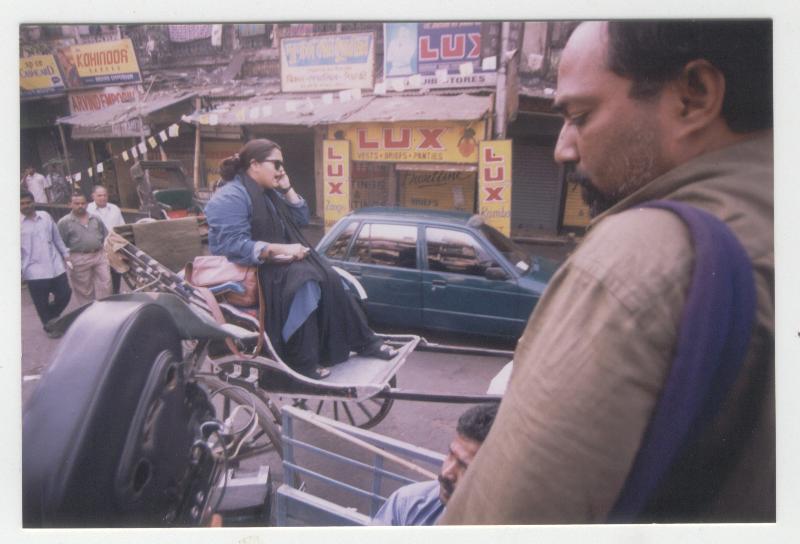The recent announcement by the Manipur government that 5,801 illegal immigrants have been detected in the Kamjong district, 15 of whom have died of natural causes and 359 voluntarily returned home, cannot but evoke varying and multi-layered concerns. The matter came to light after the Kamjong MLA, Leishiyo Keishing alerted it to the government naming the villages they were taking shelter in. Thereafter, biometric records of most of them were taken. Not long after, the MLA also raised another concerns that the immigrants were outnumbering local villagers in the area, and arrangements must be made to have them deported at the soonest to their homes in Myanmar.
There have also been concerns raised by Kamjong district based civil society organisations and others, that those detected are unlikely to be the entire number of immigrant in the district, and there would be many more quietly taking shelter in other villages, and that the need of the hour was for official determination of the exact number and having them recorded biometrically so that they can all be deported as and when the situation calls for it. Although officially the community the immigrants belong to is not specified, information from Tangkhul Naga civil society organisations say the majority are of the Kuki-Zo tribes. Furthermore, the concern is also that the new detections are only in the border district of Kamjong, and that there is no gainsaying the situation is similar or even worse in other border districts of Ukhrul, Tengoupal, Chandel and Churachandpur.
There are two important angles to the matter. One is, there is a complete social turmoil in Myanmar at the moment. This followed the February 2021 military coup ousting the democratically elected civil government headed by Aung Saan Swu Kyi’s Natioal League for Democracy, and the resistance against the Junta thus installed ever since. This resistance is led by a force now known as the People’s Defence Force, PDF, among the majority Bamar population, and the PDF is finding many, though not all, willing allies amongst the country’s myriad ethnic armies who had all along been fighting for the liberation of their own territories from the grip of the Union of Myanmar, either totally or else as comprehensively autonomous regions.
The PDF, as Bertil Lintner pointed out in his recent lecture in Imphal on the invitation of the All Manipur Working Journalists Union, AMWJU, is not a single group organised under any strict discipline or command hierarchy, but more of many different local forces of Bamar populations putting up resistances in their respective circles, with little coordination with each other. Even then, in partnership with the ethnic rebels, they are proving to be a formidable force for the Junta fight, but as other close watchers of Myanmar politics, such as Richard Horsey, have pointed out, it is not going to be easy for them to defeat the Junta. The Junta, according to many of these observers do not have to win every battle, they just need to wait for the PDF to tire out and begin disintegrating.
Moreover, the anticipation is, should the Bamar population, including the PDF, also begin to sense any danger of Myanmar disintegrating, their partnership with the ethnic rebels may come to an end, for unlike the ethnic states which have been fighting to free themselves from the yoke of the Myanmar Union, they believe staunchly in the idea of Myanmar determined by its history and legacy of the Union.
This burden of historical identity even when it has been relegated to the realm of the abstract, is indeed universal. Those of us in Manipur would not find it difficult to understand this.
It is understandable that the violent political turmoil in Myanmar would have caused many of its population to flee to other countries, and a good number of them have landed in India, particularly Mizoram and Manipur. All the host countries these war distressed people are taking refuge in would need to as per international humanitarian principles, treat these refugees with respect and shelter them until the situation in their home country improves and they can safely return. What is however peculiar is, those fleeing into Manipur for instance, have relatively very few Bamar or Shan, although the Sagaing Region which neighbours Manipur – except in the south which borders the Chin State – is overwhelmingly Buddhist Bamar and Shan majority, together constituting 92 percent. This notwithstanding, the majority of those who have come across are of the Kuki-Zo tribes. This is perhaps because they are hard pressed far more than other sections of the population, not just by direct violence, but also by the collapsing economy as well, for the Chin State is already considered the most impoverished of all regions of Myanmar. The Chin tribes in Sagaing Region too are also not doing too well economically too. It is an unfolding humanitarian crisis in Myanmar, but the burden of its impacts are born in different quantum by different sections of its people.
But there are other layers to this same problem. To onlookers from outside who would have little ground knowledge would probably think it is ridiculous for a state like Manipur, whose population is over 30 lakhs now, are alarmed by the arrival of a few thousand refugees. What is often missed however is a picture of the localised canvas on which this migration is happening, and the Kamjong case has brought this to the fore quite distinctly. What has to be remembered is that the host areas receiving these refugees are also very thinly populated, and if these migrants are compelled to settle where they are, the local demographic balance can be overturned against the hosts.
As a matter of fact, it is ironic the conflict now is between the Meiteis in the valley and Kukis-Zos over this alleged ongoing migration process of Kuki-Zo tribes and the demographic imbalance this is causing. If there were to be anxiety over it, the first to feel it should have been the Nagas who share immediate living space in the hills with Kuki-Zos. As in the case of the majority Bamar in Myanmar, for the Meiteis too, it is more of a burden of an archetypal memory of Manipur’s history and their felt need to ward off any challenge to this idea of ancient Manipur. It is therefore a perceived provocation in the abstract realm, and relatively little on actual ground, except in places like Imphal city, Churachandpur and certain other township where they have come to share living spaces in relatively more recent times.
Nagas and Kukis are in this sense live much more in proximity, and alas if a conflict between them should happen to break out, it can be predicted to have far worse consequences than we are witnessing currently in the Meitei-Kuki-Zo fight. Indeed, in the 1990s, when a confrontation did happen between Nagas and Kukis, the casualties were in the vicinity of a thousand as compared to 200 now. This is another reason why the Kamjong alert on illegal immigrants and the concerns of immediate local hosts need to be taken seriously by the authorities.
If a humanitarian approach to the refugee problem is an obligation, the sense of threat amongst the local population too will have to be seriously taken cognizance of with understanding. This is also especially so because in an electoral democracy, political power is directly related to number. The fact also is, electoral constituencies in the state are relatively small, and a few thousand new voters can swing electoral fortunes radically. Today, Kamjong is considered a Tangkhul Naga reserve, but if there are perceived dangers this is set to change, let us have no doubt there will be social tensions, and possibly even violent conflicts. No extra points for guessing such an outcome would further complicate the already bad situation in the state.
Again, we are only talking about Kamjong now, but things can turn bad in other border constituencies too, including Tengnoupal and Chandel, even it was to be presumed Churachandpur can absorb the fresh immigrants without frictions on the consideration they are kindred tribes. However, in the long run, even this is not likely to be the case.












